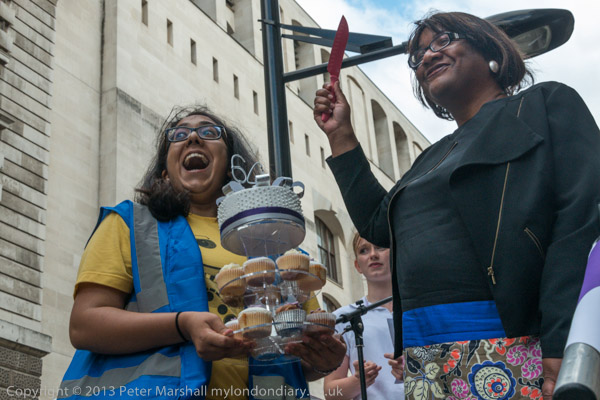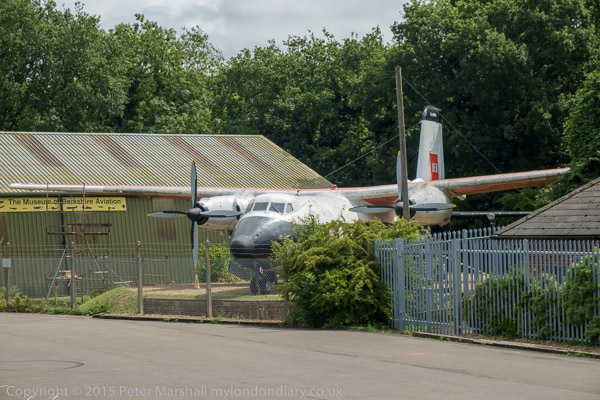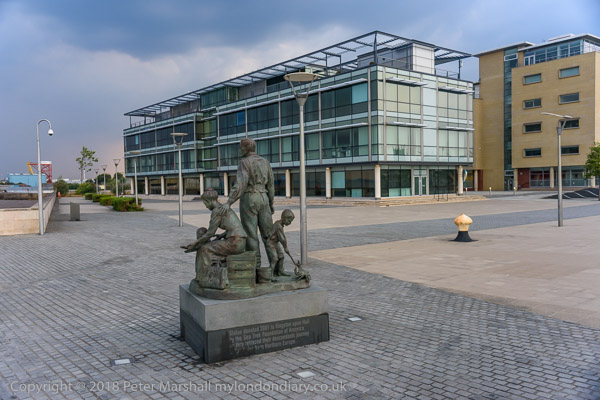Citroen & More Clapham continues my walk on Sunday 28th May 1989. The previous post was North St, Rectory Gardens & Rectory Grove and the walk began with Lavender Hill & Wandsworth Rd – 1989.
Although cars in my pictures now often attract attention when I post the on Flickr, I seldom deliberately photographed them, but this is one exception. I think even I might have identified this as a Citroen, but it was only after I posted it that one of my regular commenters identified it as dating from 1938. So it was 51 years old when I took its picture, and apparently is still around and still taxed for road use.
The house it is parked in front of is 12 Rectory Grove, at the end of a short Grade II listed terrace at 12-18, which dates it only as “Early-mid C19”.
I walked back south down Rectory Grove, again passing the entrance to Rectory Gardens which I wrote about in my previous post on this walk. As you can see there are shops on Rectory Grove, one still open in 1989 and I think selling pottery. These buildings were rather grander than those in Rectory Gardens, with three storeys. Between the two shops was I think the entrance to flats above. There was another shop beyond this corner building and may once have been a couple more, although these were I think residential in 1989.
Continuing south I came to Old Town and The Polygon with this Grade II listed corner shop with its row of seven large oilmen’s jars above its mid-19th century shop fronts. The building itself is perhaps a little over a hundred years earlier.
Oilmen sold oil to the public, mainly for use in lighting before the introduction of gas and electric lighting, and often used ancient pots and their pictures in advertising. Large jars of this shape were used for the transport of oil by ship, often containing around 20 gallons, and when full these thick earthenware vessels must have weighed 70 kilograms or more. They were protected in transit with rope cases, but moving them must have been heavy work.
But I think these may well have been ‘single-use’ rather than being returned to source for refilling. Jars were often sawn in half as in Clapham as shop signs in the 19th century and were always then painted red, and often fixed like these above the shop windows. Many came from the Mediterranean filled with olive oil, though whale oil was more commonly used for lighting until the supply fell off and it was replaced by mineral oils.
Designed by William Nevin as a Baptist Church in 1889, the building was renovated and opened as the People’s Church in 1959. Sold after the roof collapsed, it is now the Grafton Square Surgery and The Grafton apartment building, where a loft flat sold recently for around £2m.
I’d photographed this decoration above the shop Pyramid only a few weeks earlier, but the lighting was right and I couldn’t resist making another picture – and I was also keen to get a better image of the crest. Here’s what I wrote about it earlier:
Walking down the street took me the Old Town, where the light was showing the device on the house at No 12 here with its proverb ‘CONTENTEMENT PASSE RICHESSE‘, the motto of the Atkins-Bowyer family. Richard Bowyer (d1820) had taken on the name when he inherited the Manor of Clapham from Sir Richard Atkins of Clapham. I’ve never quite worked out what the relief which is thought to have come from the old Manor House is meant to depict.
Back in 1989 I didn’t own a decent long telephoto lens – the longest I owned were a 90mm for the Leica and a 105mm for the Olympus. I think this was probably taken with the 105mm and the device on the wall is certainly clearer, but no easier for me to interpret. At the top there appear to be three animals with a bird, perhaps an ostrich standing on top of what could be a crocodile or dragon or hound with perhaps a snake on the bird’s back, its head going down to the croc.
Below that with the motto spread over it is what could be cloth hanging from spars or perhaps flames or who knows what, and at the bottom a shield with stripes and what looks like two chickens with their wings up above and one below a row of stars. Perhaps others will know more and comment.
The old manor house was only finally demolished in 1837, though its octagonal tower had been taken down around 1810, perhaps because it was unsafe. It was probably this tower that led to the street laid out on the site, near St Paul’s Clapham being named Turret Grove.
Continuing south along The Pavement took me to this large 1936 development of flats on five storeys with some little interesting At Deco features of which this gate post and porch are perhaps the best. I think that the post (and its partner on the other side of the entrance) may have been built to support an entrance light, but there was no sign of it. The building, which extends back some distance in a roughly H-shape replaced three existing buildings on The Pavement.
It was designed by J J de Segrais and three of its top floor flats on this side have balconies with views over Clapham Common. At the centre just below roof level is a small sculptural decoration which I didn’t try to photograph. Trinity Close is is joined at its north side to another large 1930s block of flats, Windsor Court (which for some reason I didn’t photograph.) It has the date A. D, 1935 on its ‘moderne’ frontage and shops along its ground floor. A tunnel through a wide entrance at the right of this block leads to the rear of both blocks.
More on this walk to follow.




















































































